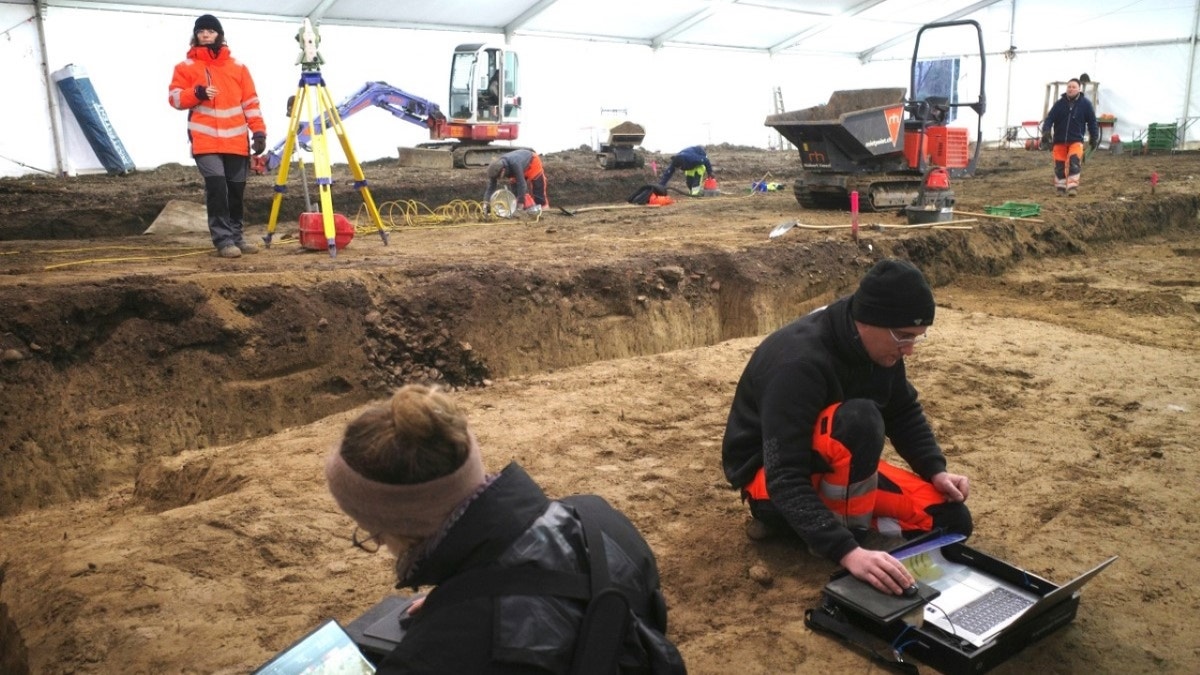A recent archaeological excavation in Switzerland turned morbid when historians came across a trove of infant burials dating back to Ancient Rome.
The excavation began last May in order to make way for three new apartment buildings in the Schürmatt district of Kaiseraugst, the Canton of Aargau said in a statement.
One of Switzerland’s 26 administrative regions, Aargau is located in the northern region of the country and borders Germany.
HISTORIC MARYLAND CHURCH OPENS DOORS TO VISITORS 320 YEARS AFTER CLOSING DOWN
The excavated properties are located in the lower town of Augusta Raurica, an ancient Roman archaeological site, so a proper investigation was needed before construction began.
The quarter was first inhabited at around the end of the first century A.D. before being abandoned during the third century.
While excavating a roughly 19,375-square-foot area, archaeologists uncovered a Roman road “with adjacent buildings and associated backyards.”
The excavators also found a large Roman building complete with a stone cellar. Another building with a cellar was partially uncovered, and archaeologists described the structures as “particularly well-preserved.”
LONG-LOST CAPITAL OF ANCIENT CIVILIZATION MAY HAVE FINALLY BEEN UNCOVERED, ARCHAEOLOGISTS SAY: ‘UNIQUE FIND’
“[They] yielded numerous finds,” said the press release, which was translated from German to English.
“Surprisingly, simpler post constructions were identified on some plots, indicating that not all plots were built with stone structures.”

“Based on the elongated rectangular layout, internal division and backyards, all buildings are interpreted as strip houses,” the statement added.
Unfortunately, the buildings and the backyards also hosted “several infant burials,” marking a grim discovery for the archaeologists.
For more Lifestyle articles, visit foxnews.com/lifestyle
“It was common in Roman times for deceased infants to be buried in homes and backyards rather than cemeteries,” the statement read.
“The graves reflect care for the dead and provide clues about high infant mortality during this period.”
Other stone shafts and pits were found, though archaeologists are still unsure what they were used for.
“Several dry stone shafts and pits were uncovered in the backyards,” the press release read. “The function of these shafts, possibly used as latrines or storage shafts, requires further investigation.”
Archaeologists also came across “numerous” late Roman coins and other discoveries.
“Among the numerous finds were some special objects: a small bronze panther statuette, a tuff stone altar, and a spindle whorl made of mosaic glass,” the statement said.
“Such finds are rare.”
The Canton of Aargau concluded that the excavation “significantly expanded knowledge about the lower town of ancient Augusta Raurica.”
“This provided valuable insights into the urban structure and parceling of this quarter,” the press release read.
“The Roman road was renewed multiple times and was almost four meters wide at its last stage. It was flanked on both sides by roadside ditches and so-called porticos (columned halls).”
Read the full article here

